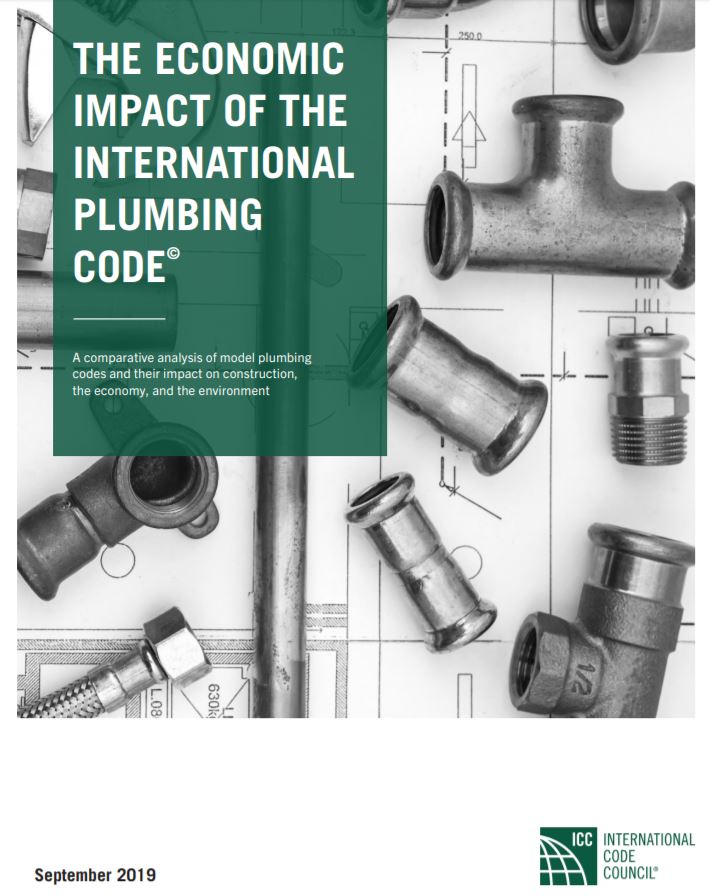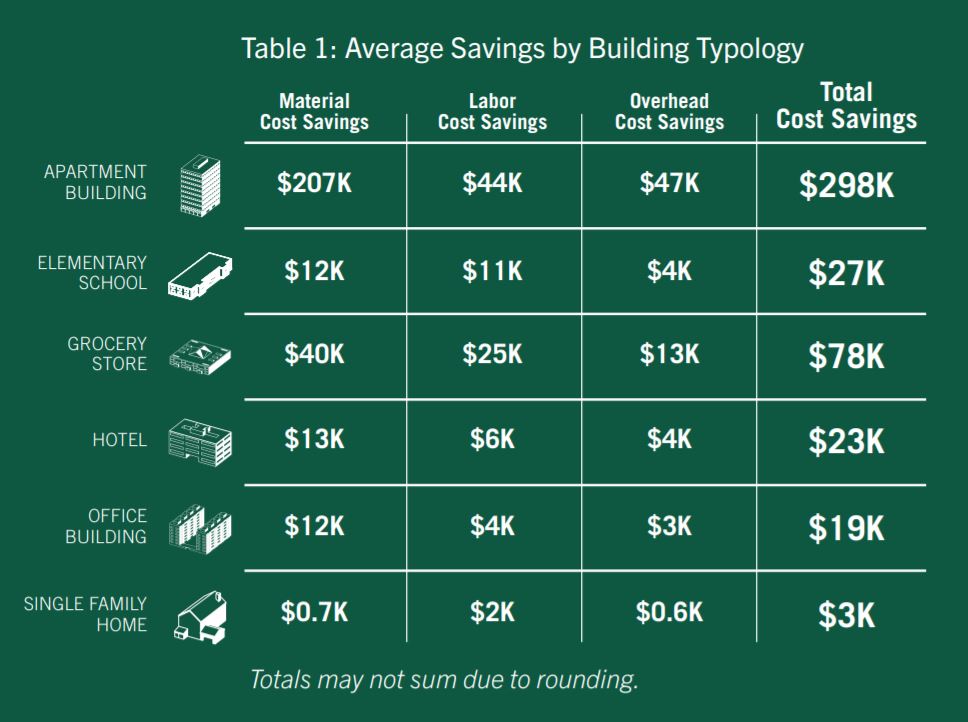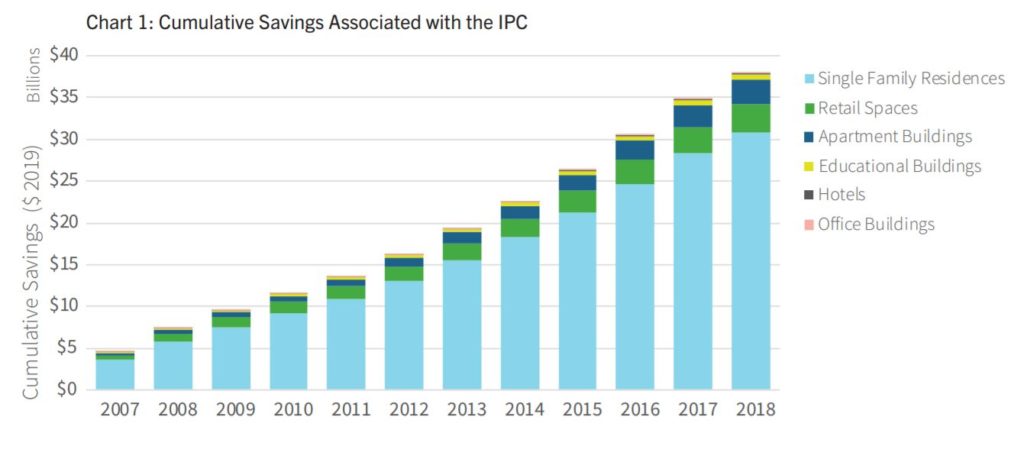
Safety and savings benefit communities that adopt the IPC
 Plumbing plays a huge role in our everyday lives and is as important to residential and commercial construction as oxygen is to the body. The often-overlooked issue of plumbing harnesses the precious resource of clean, convenient water for health, hygiene and well-being. Plumbing and sanitation systems have protected populations from communicable disease throughout history — extending life expectancy more than any medical advancement — and plumbing advancements continue to protect lives in developing nations and increase water efficiency in regions affected by droughts and water shortages.
Plumbing plays a huge role in our everyday lives and is as important to residential and commercial construction as oxygen is to the body. The often-overlooked issue of plumbing harnesses the precious resource of clean, convenient water for health, hygiene and well-being. Plumbing and sanitation systems have protected populations from communicable disease throughout history — extending life expectancy more than any medical advancement — and plumbing advancements continue to protect lives in developing nations and increase water efficiency in regions affected by droughts and water shortages.
Last year, the International Code Council released “The Economic Impact of the International Plumbing Code,” a study that provides a comparative analysis of model plumbing codes and their impact on construction, the economy and the environment. Findings show that those jurisdictions that use the International Plumbing Code (IPC) save in construction costs, see an increase in construction-related jobs, and benefit from energy efficiency in communities — all done without sacrificing safety.
The comprehensive analysis evaluates the costs and savings associated with construction, labor and materials under the 2018 IPC, as well as estimates the employment and environmental gains that would have resulted from the national implementation of the IPC. Plumbing engineers assessed multiple buildings, such as single-family homes, offices, hotels, schools and grocery stores, and applied model code requirements to determine the associated building costs. The study found that IPC implementation results in considerable savings in plumbing materials and construction costs and increases productivity and job growth in local economies.
Advancing safety through the IPC
Building codes inform the affordability, safety, resiliency and sustainability of our buildings. The first and foremost priority in the development of the International Codes (I-Codes) is safety, which is ensured through regular updates that incorporate the latest advances in technology, best practices and building science. The IPC establishes safety standards for health, property protection and public welfare by regulating and controlling the design, construction, installation, quality of materials, location, operation and maintenance or use of plumbing equipment and systems. The IPC is coordinated and correlated with the full suite of I-Codes, which cover new residential and commercial construction and renovation, fuel gas, and mechanical systems.
The IPC’s widespread adoption by states and support from the federal government are testament to its thoroughness and relevance. The IPC is the most widely adopted plumbing code in the nation, and is in use or adopted in 37 states, the District of Columbia, Guam and Puerto Rico. Approximately 168 million, or half of the total population, lives in a state that has adopted the IPC. Still more residents live in states that are “home rule” where the individual county or city selected the IPC as their building code (e.g., Paris, Texas). The IPC is most common along the East Coast and Midwest, and some of the most densely populated corridors are in IPC states, counties and localities.
The General Services Administration requires the IPC for all civilian governmental buildings and the Department of Defense requires the IPC for all U.S. military bases. The Federal Emergency Management Agency credits the IPC’s mitigation benefits through its Community Rating System, which provides federal flood insurance discounts for communities undertaking disaster mitigation measures. The Building Code Effectiveness Grading Schedule, which insurance companies use to provide premium discounts based on community mitigation measures, also credits up to date IPC adoption.
Savings are prevalent in the IPC
 While a critical component of the built environment, plumbing codes account for a considerable share of a building’s cost and materials as well as its corresponding water and energy use. Nationwide, an overall change to the IPC would realize $20 million in construction savings.
While a critical component of the built environment, plumbing codes account for a considerable share of a building’s cost and materials as well as its corresponding water and energy use. Nationwide, an overall change to the IPC would realize $20 million in construction savings.
The savings that are afforded by the IPC vary based on the size, scale and use of the building in question. In applying model codes to a series of identical building prototypes of several different uses (e.g. single-family home, office building), the study identified considerable savings in materials, labor and overhead costs under the IPC in comparison to other model codes. Analysis found that a single-family home built to the IPC saves up to $4,000 in labor, materials and overhead. But when buildings increase in size, these savings increase significantly. For example, a large apartment building has a total savings of almost $300,000 under the IPC. The savings result in greater home affordability and reduced resources in the construction of the home without sacrificing safety.
Savings are dependent upon the materials that are used in construction. For example, an apartment building with PVC (polyvinyl chloride) waste pipes and CPVC (chlorinated polyvinyl chloride) water pipes saves $294,000 altogether, while that same building with cast iron waste pipes and PEX (cross-linked polyethylene) water pipes has an additional savings of $9,000, or a total of $303,000. The greatest savings come from the decreased amount of materials required to build a plumbing system to IPC standards. Less materials translates to lower labor costs — as fewer workers are required to install and manage a more modern designed system — and therefore lower overhead costs. These savings are passed on directly to the consumer.
 The savings that are passed on to consumers also directly influence and grow their local economies. Households that have greater cash on hand are more likely to spend that money on goods and services, contributing to their communities by investing locally. For example, a family that saves $4,000 on the purchase of their home will use their savings to purchase additional goods. If many households are afforded these savings, and then spend those savings, greater economic activity, greater revenues and increased employment are the result. When these savings are aggregated to the county, regional or state level, this equates to thousands of new jobs, all induced by the savings afforded by using the IPC.
The savings that are passed on to consumers also directly influence and grow their local economies. Households that have greater cash on hand are more likely to spend that money on goods and services, contributing to their communities by investing locally. For example, a family that saves $4,000 on the purchase of their home will use their savings to purchase additional goods. If many households are afforded these savings, and then spend those savings, greater economic activity, greater revenues and increased employment are the result. When these savings are aggregated to the county, regional or state level, this equates to thousands of new jobs, all induced by the savings afforded by using the IPC.
After determining the difference in construction labor and materials, the study estimates the cost benefits, employment and environmental gains the nation would have received if the IPC had been applied nationally over the last 12 years (from 2007 to 2018). The benefits of the IPC are significant — counties that applied the IPC, from 2007 to 2018, saved $38 billion in construction costs, realized 166,000 additional jobs, emitted one million fewer tons of carbon dioxide and saved 880 million feet of pipe. These savings result in more productive buildings, communities and regional economies.
Conclusion
The IPC improves the affordability, sustainability and durability of all of our communities. The video below illustrates how plumbing codes impact the world around us and how adoption of the IPC impacts the cost, safety and the global environment.
The online report includes an interactive tool that allows users to click on any state or county and see which model code they currently use as well as how much the state or county would save by switching to the IPC. The information presented on this site enables professionals and interested parties to understand the plumbing code differences and how these differences impact the regional, state and national economy and environment.
Read the full report and see how your community is impacted at www.iccsafe.org/IPC.






